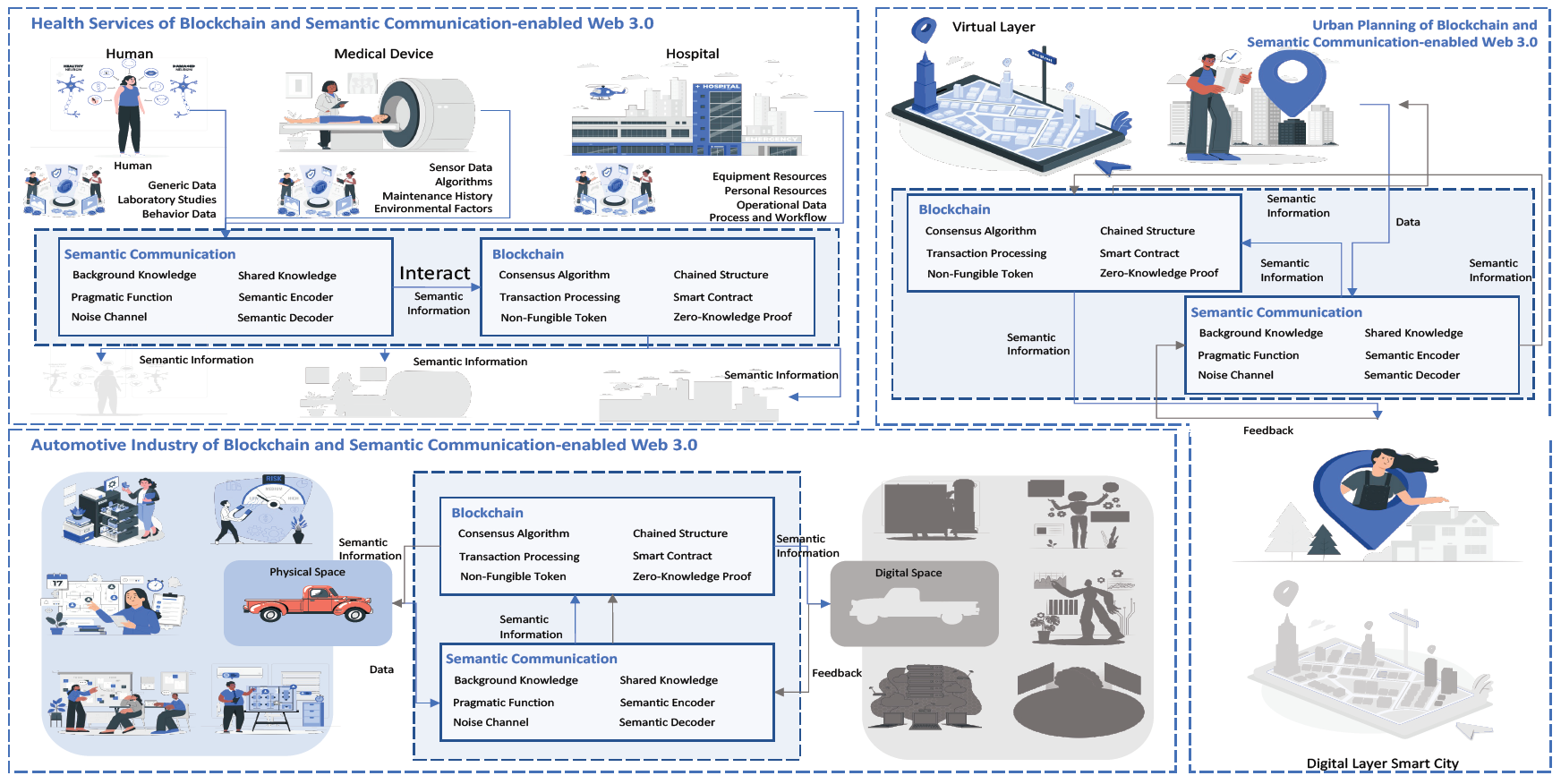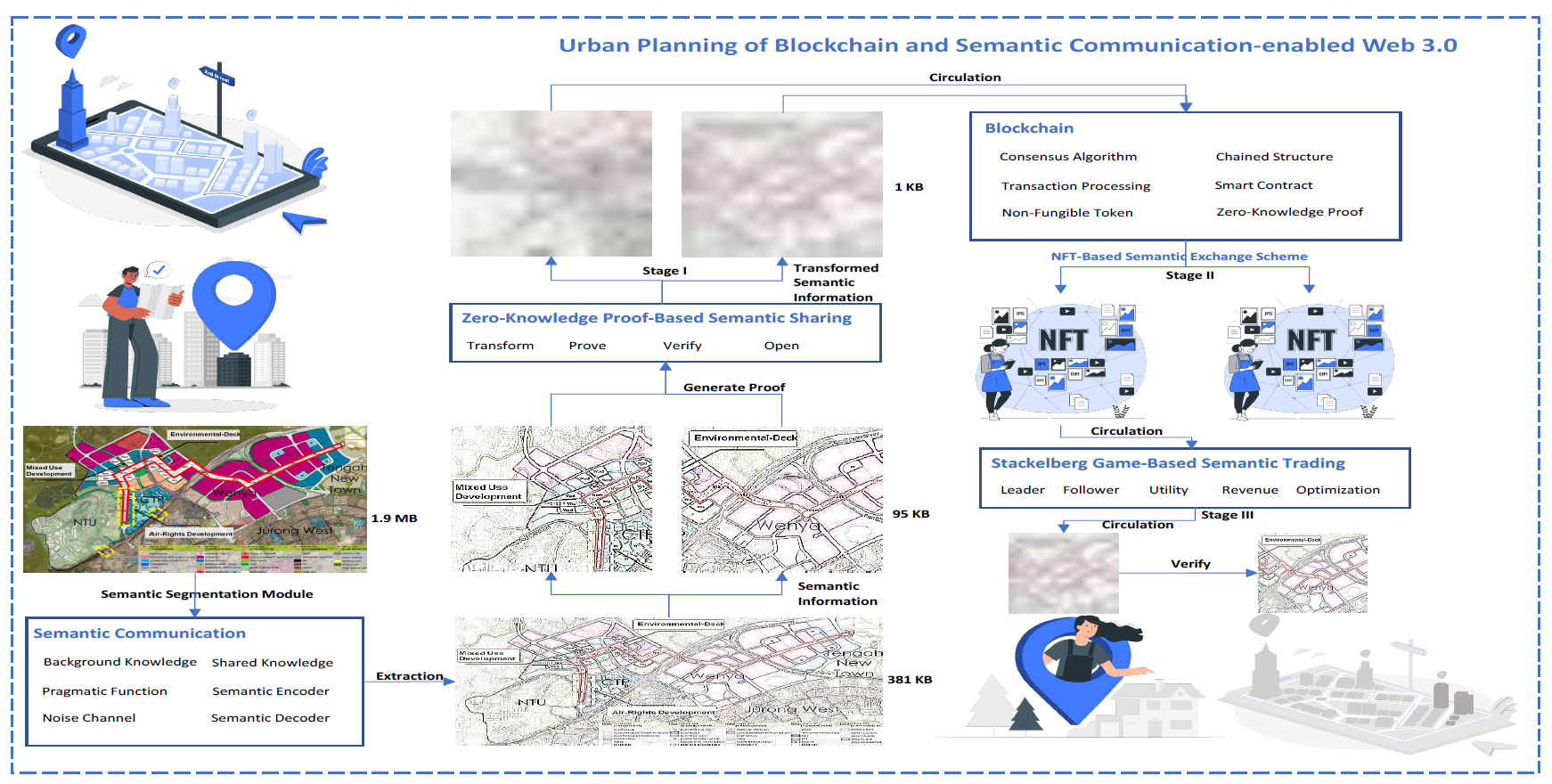A Blockchain-based Semantic Exchange Framework for Web 3.0 toward Participatory Economy
Published in IEEE Communications Magazine, 2022
Recommended citation: Yijing Lin, Zhipeng Gao, Yaofeng Tu, Hongyang Du, Dusit Niyato, Jiawen Kang, and Hui Yang. "A Blockchain-based Semantic Exchange Framework for Web 3.0 toward Participatory Economy." arXiv preprint arXiv:2211.16662 (2022). https://arxiv.org/abs/2211.16662
Abstract: Web 3.0 is the next-generation Internet that enables participants to read, write, and own contents in a decentralized manner. It is mainly driven by blockchain, semantic communication, edge computing, and artificial intelligence, which can construct value networks to achieve participatory economics based on participatory decision making. Web 3.0 can capture the characteristics of blockchain, semantic extraction, and communication to achieve decentralized semantic sharing and transfer information precisely. However, current Web 3.0 solutions focus on the blockchain while overlooking other new technologies’ roles in Web 3.0. To further unleash the advantages of semantic extraction and communication in Web 3.0, in this paper, we propose a blockchain-based semantic exchange framework to realize fair and efficient interactions. In this framework, we first attempt to tokenize semantic information into Non-Fungible Token (NFT) for semantic exchange. Then we utilize a Stackelberg game to maximize buying and pricing strategies for semantic trading. We also leverage Zero-Knowledge Proof to share authentic semantic information without publishing it before receiving payments, which can achieve a fair and privacy-preserving trading compared with current NFT marketplaces. A case study about urban planning is given to show clearly the proposed mechanisms. Finally, several challenges and opportunities are identified.
Index Terms: Web 3.0, NFT, Optimization, Zero-Knowledge Proof

Figure 1: Difference Between Web 1.0, Web 2.0 and Web 3.0.

Figure 2: Applications of Blockchain and Semantic Communication-enabled Web 3.0.

Figure 3: Case Study in Urban Planning.
